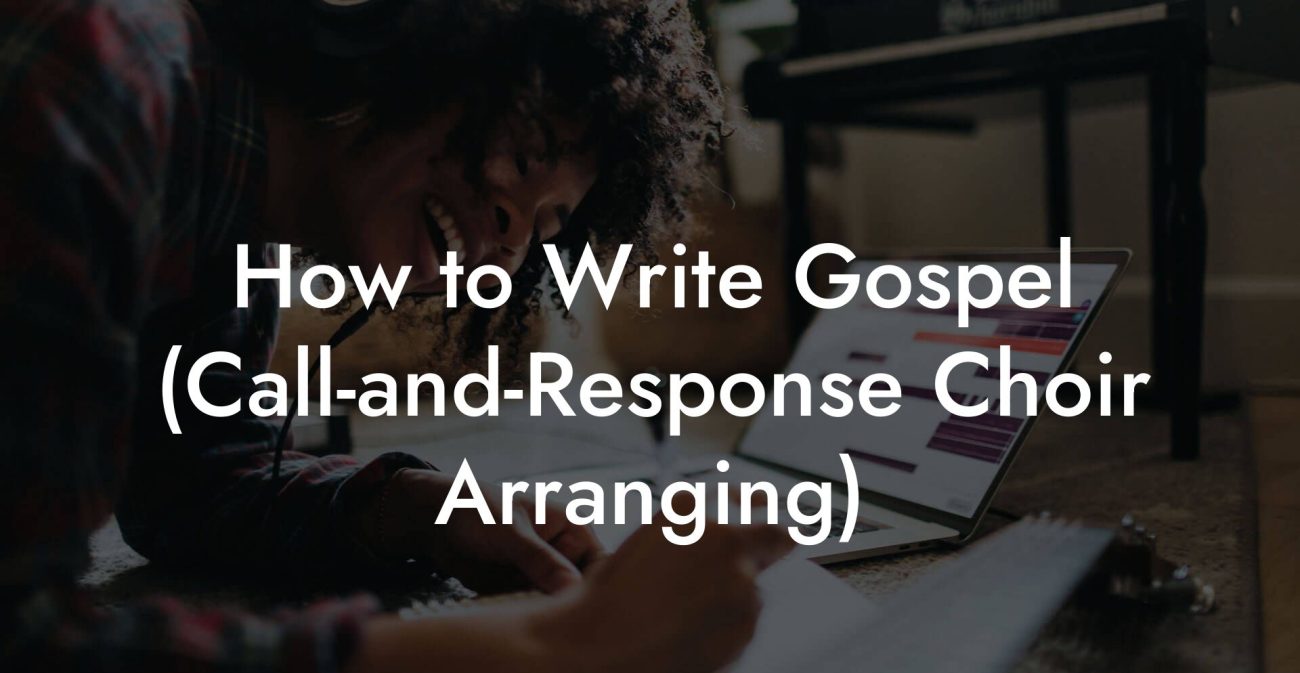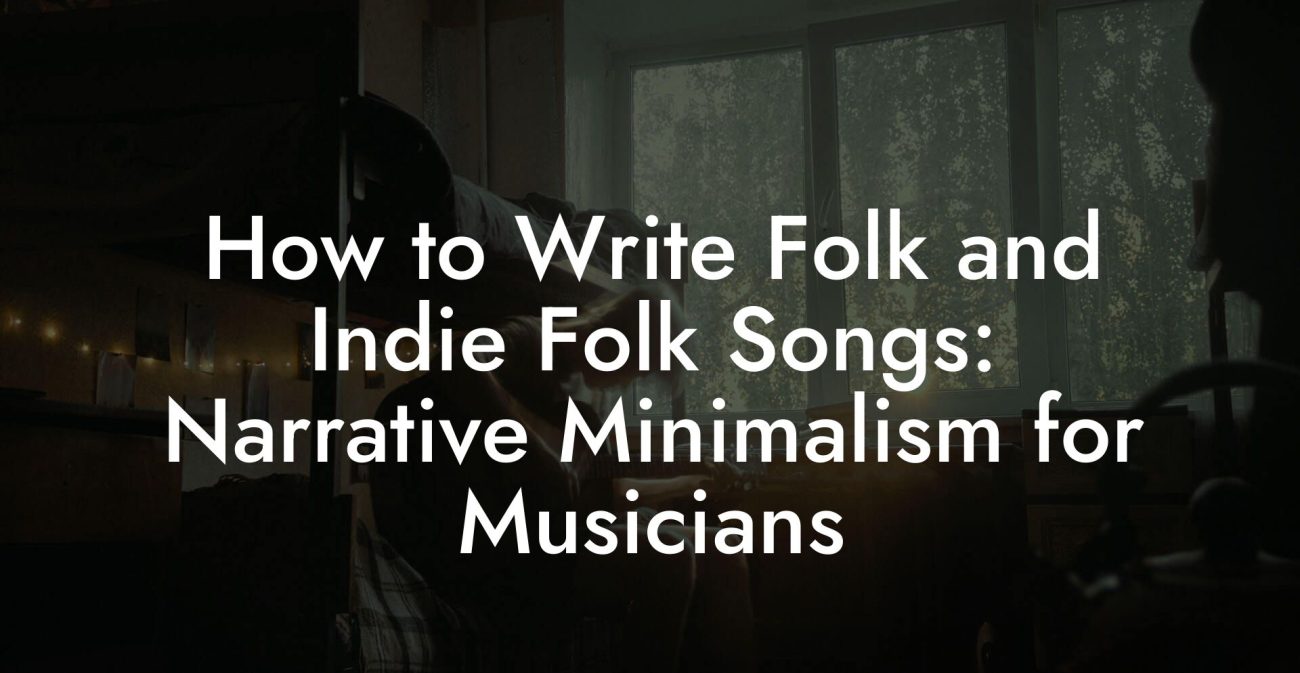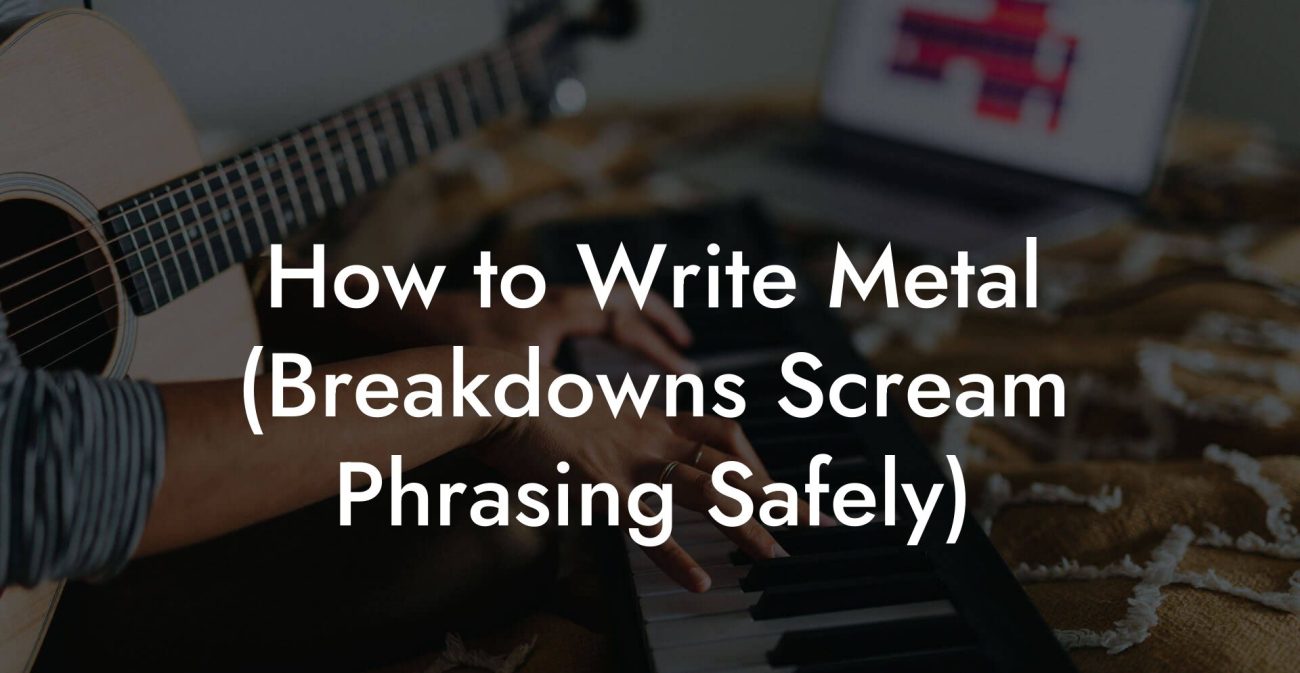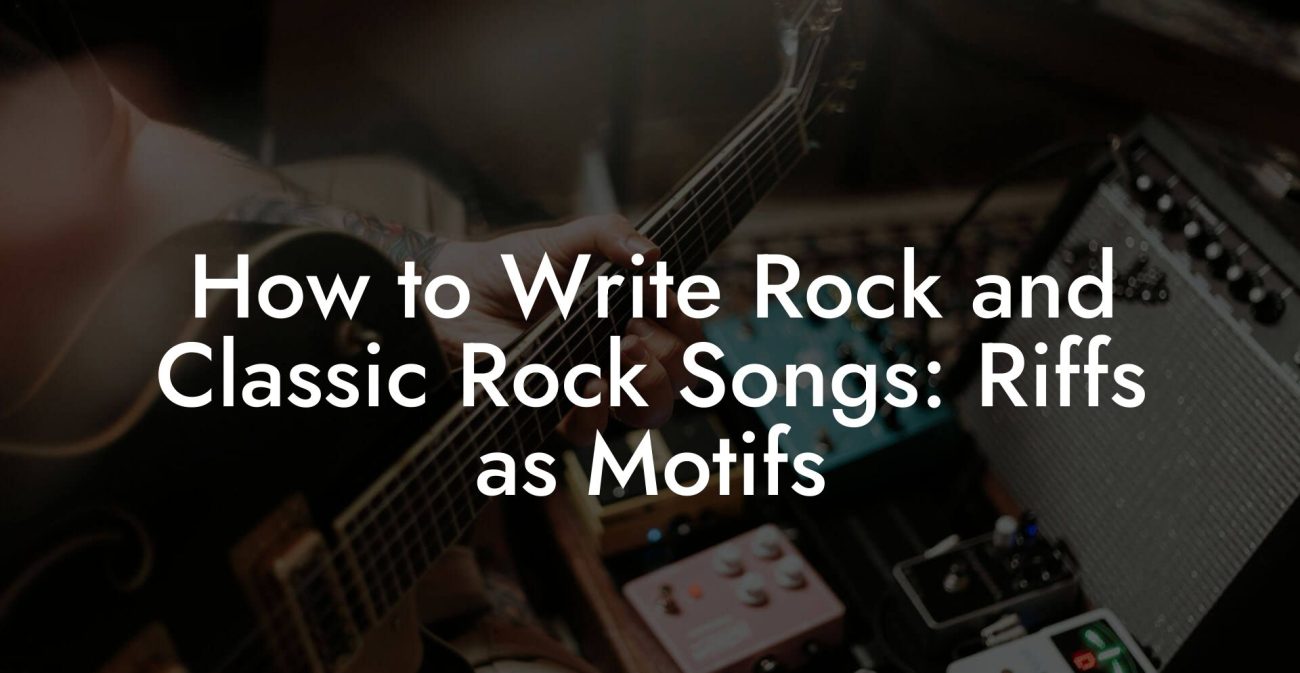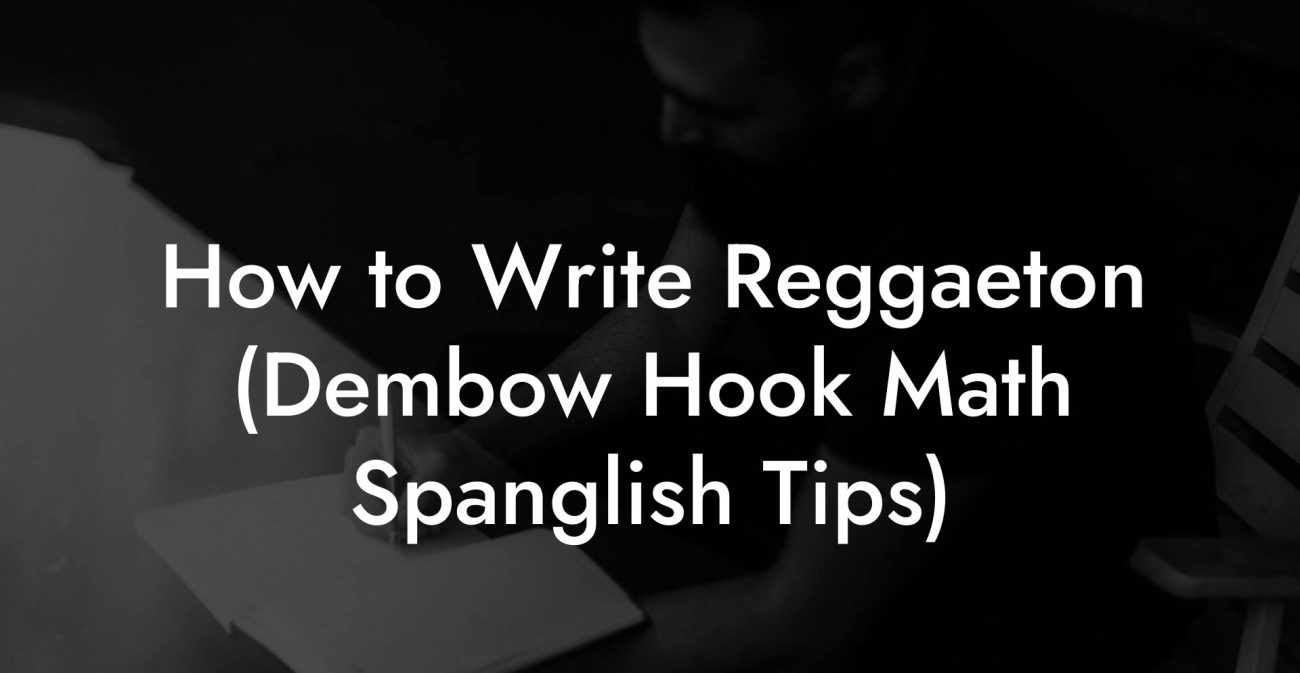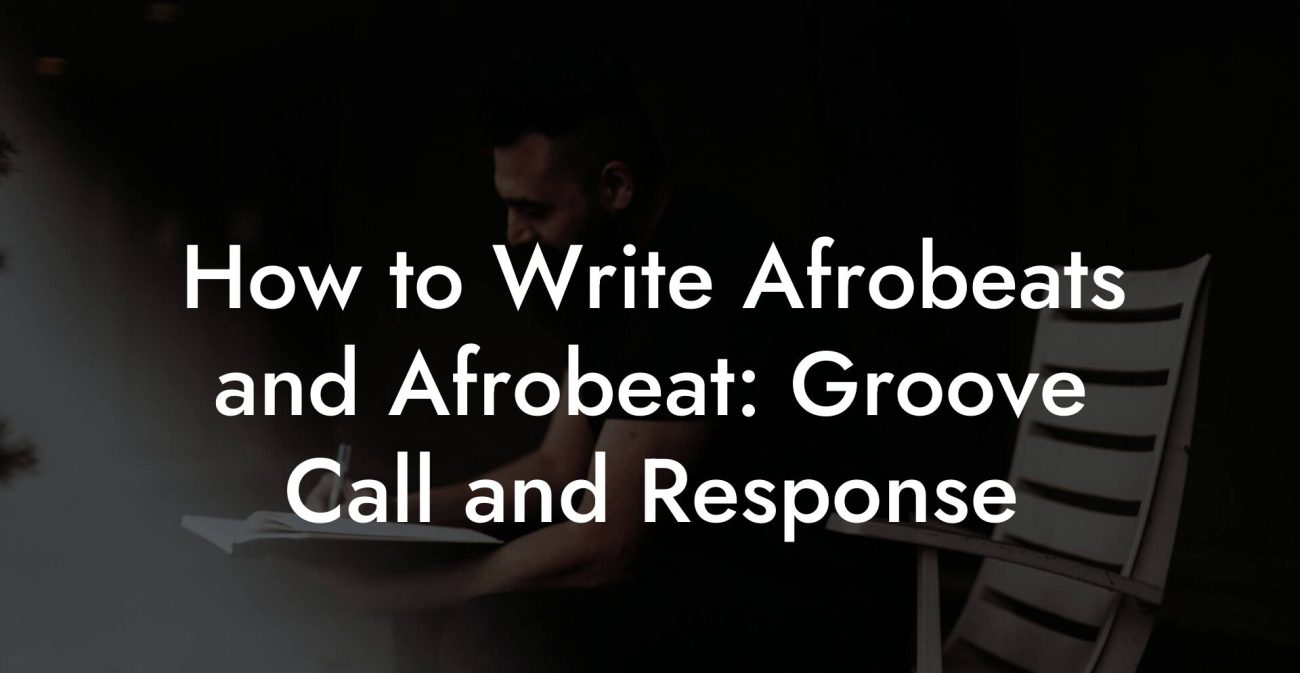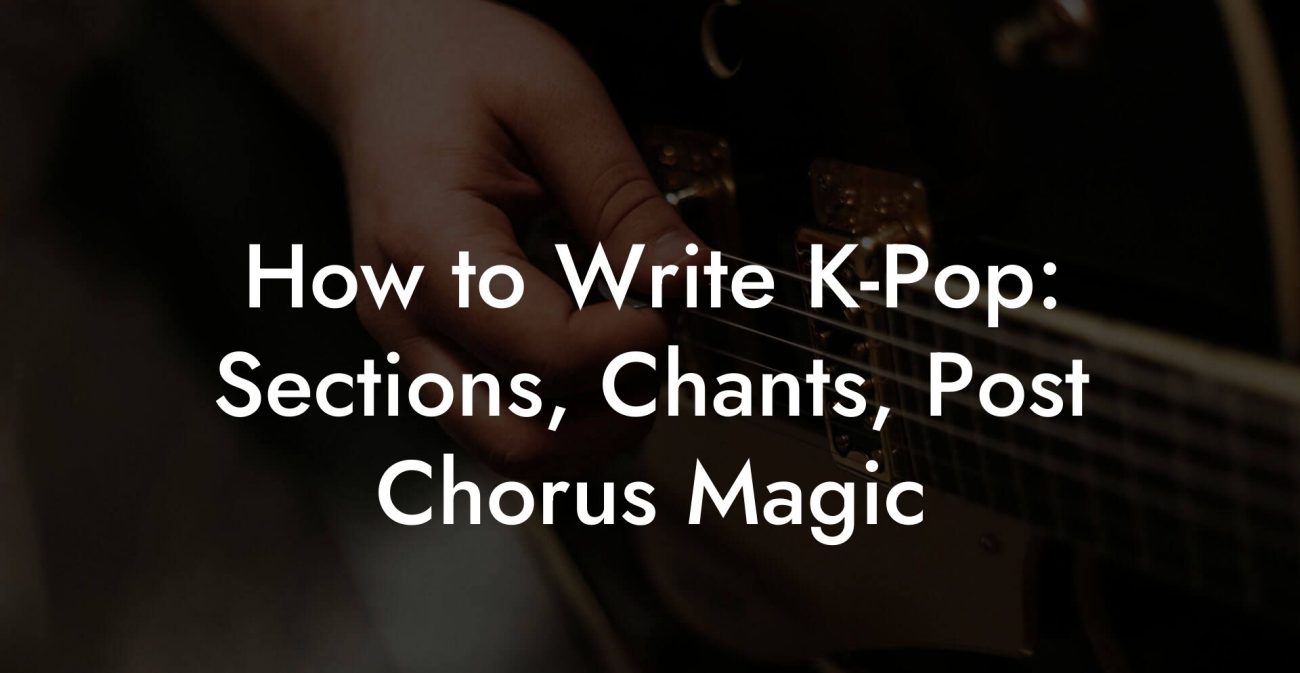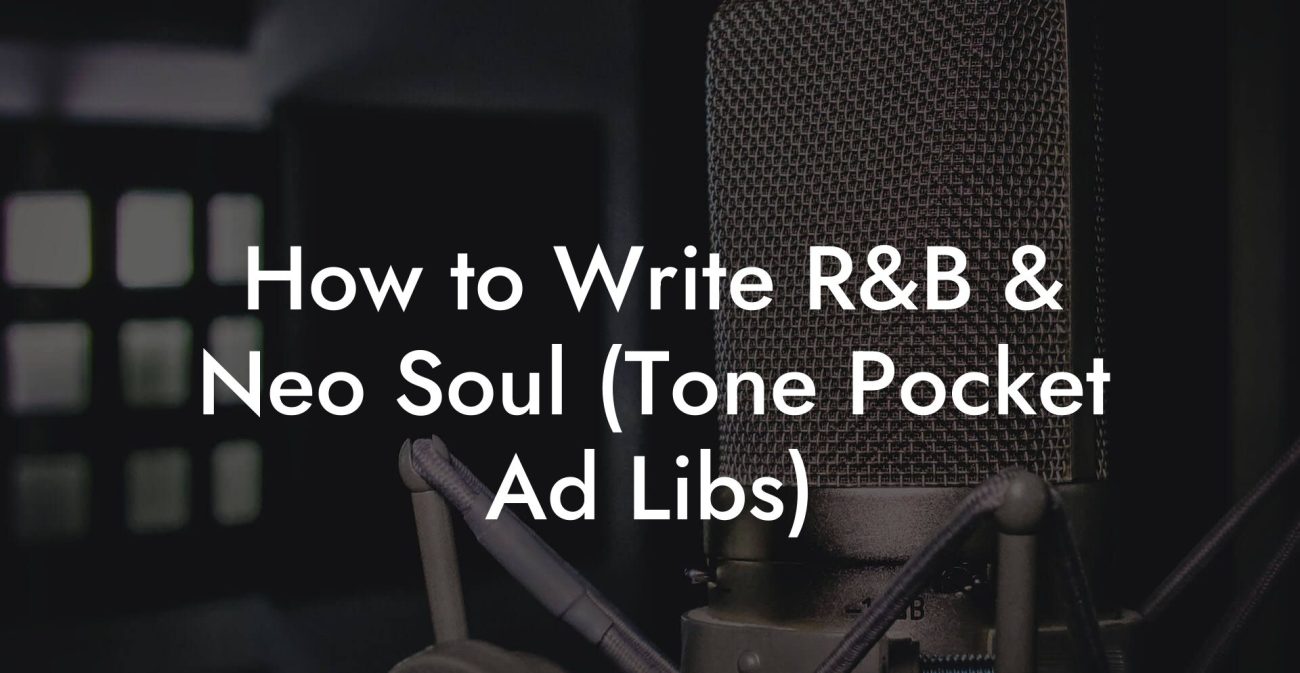Songwriting Advice
How to Write Pop Songs that Stick Like Glitter
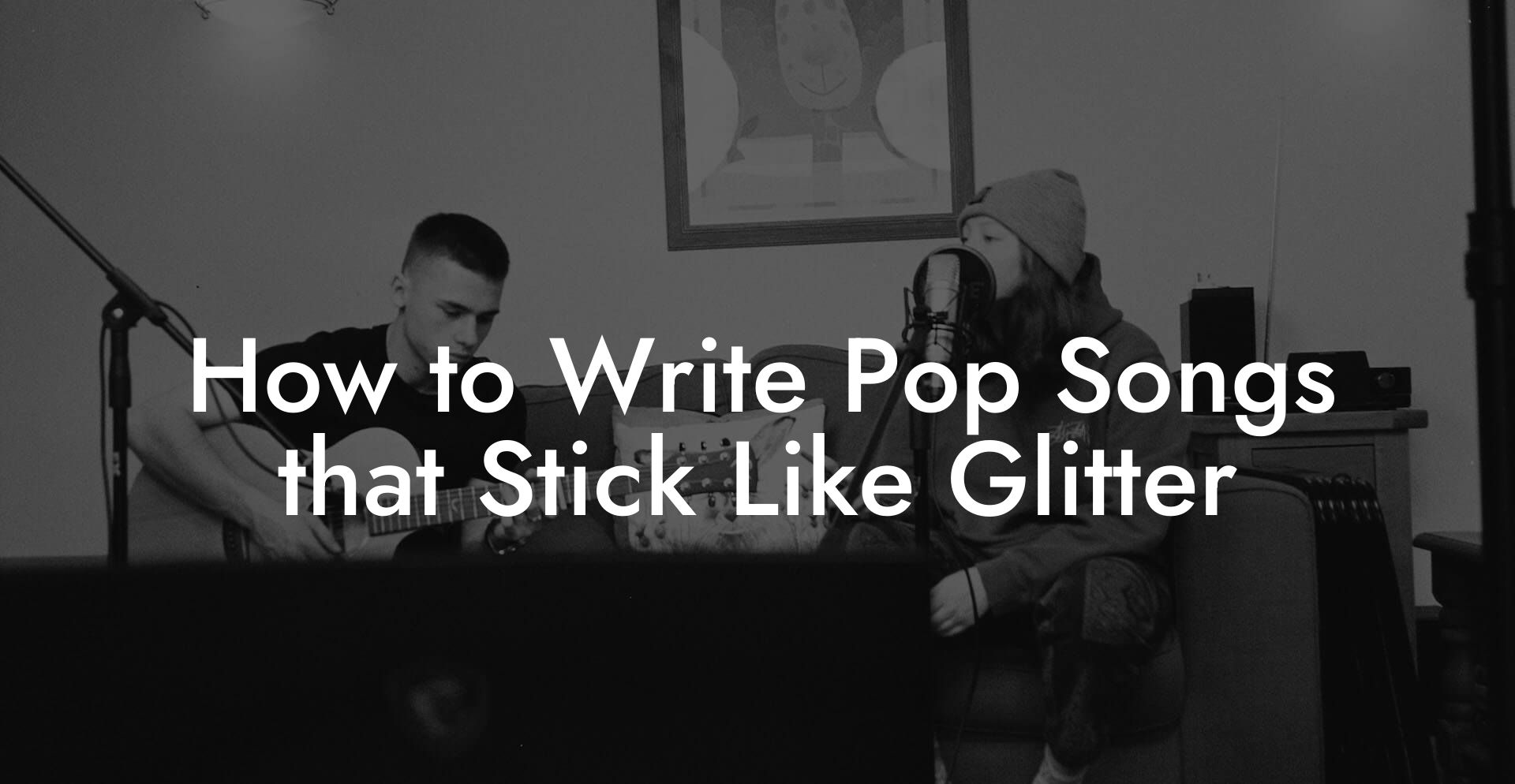
You want a song that clings to a listener the way glitter clings to your shirt after a nightclub confetti war. You want a hook that sneaks into a commute, into a shower, into a group chat, and refuses to leave. You want lyrics that feel like private jokes but are universal enough for strangers to sing in someone else s memory. This guide gives you the messy, brilliant, repeatable method to write pop songs that do that job and do it fast.
Quick Interruption: Ever wondered how huge artists end up fighting for their own songs? The answer is in the fine print. Learn the lines that protect you. Own your masters. Keep royalties. Keep playing shows without moving back in with Mom. Find out more →
Quick Links to Useful Sections
- Why Some Pop Songs Stick and Most Don't
- Define Your Core Promise Before You Touch a Chord
- Structure Strategies That Force Hook Delivery
- Structure A: Classic Build
- Structure B: Hook First
- Structure C: Short and Viral
- Write a Chorus That People Text Their Friends
- Verses That Show Not Tell
- The Pre Chorus as the Pressure Cooker
- Post Chorus for Pure Earworm Energy
- Topline Method That Actually Works
- Melody Diagnostics That Save You Hours
- Prosody and Why Your Lines Feel Off
- Rhyme Choices That Keep It Modern
- Lyric Devices That Work Hard for Little Effort
- Ring phrase
- List escalation
- Callback
- Crime Scene Edit for Brutal Clarity
- Write Faster with Micro Prompts
- Arrangement Moves That Make Pop Songs Feel Bigger
- Lift Map you can steal
- Viral Map for social clips
- Production Awareness for Writers
- Vocals that Sell the Song
- Examples You Can Model
- Common Mistakes and How to Fix Them
- Finish the Song with a Repeatable Workflow
- Songwriting Exercises You Can Do Today
- The Title Ladder
- The Camera Pass
- The Contrast Swap
- Real World Scenarios and How to Use This Guide
- Pop Songwriting FAQ
Everything here is written for millennial and Gen Z artists who want sharp results without reading a music textbook. We will cover emotional focus, structural moves, topline craft, prosody which is how words sit on beats, melody diagnostics, rhyme choices, arrangement decisions, production awareness, and finish workflows. Expect exercises you can do in your kitchen, in a Uber, or during a bored midnight shower. We explain terms and acronyms like BPM which stands for beats per minute, and DAW which stands for digital audio workstation. We also give real life scenarios that make the advice stick like the glitter in that metaphor.
Why Some Pop Songs Stick and Most Don't
Pop songs that stick share three core properties. First, they present a single emotional idea. Second, they give the brain a small repeatable gesture. Third, they reward memory with a payoff early and often. If you remove production and arrangement, you can test a song s stickiness by singing the hook to a stranger and asking if they remember anything five minutes later. If they do, you are onto something.
- One emotional promise said plainly.
- A gestural hook that is easy to hum, chant, or text to a friend.
- Immediate payoff with a hook in the first minute and recurring callbacks.
Example scenario. You are in line at a coffee shop. Your phone plays your new chorus for the first time. The barista hums it. When you leave, the barista can sing one line to their friend and that friend can hum the chorus. Congratulations. That is stickiness.
Define Your Core Promise Before You Touch a Chord
Before you write a melody or a chord progression, write one sentence that captures the emotional promise of the song. Call it the core promise. Make it sound like a text to an ex, or a tweet you would pin for clout. No poetry. No metaphors that need explanation. Just the idea a first time listener can repeat back.
Examples
- I am done apologizing for wanting more.
- Tonight I will try to love myself like I try to love others.
- You left your jacket but I will not ask you for reasons.
Turn that sentence into a title if possible. If it is too long, pull a tight phrase that carries the meaning. Titles are memory anchors. Short is good. Singable is better.
Structure Strategies That Force Hook Delivery
Pop listeners have a generous ear and a short attention range. You need to deliver identity and a memorable line within thirty to sixty seconds. Here are three dependable structures to choose from. Pick one and map it on a single page before writing lyrics or melody.
Structure A: Classic Build
Verse one, pre chorus, chorus, verse two, pre chorus, chorus, bridge, final chorus. This shape gives you room to escalate. The pre chorus is pressure, the chorus is release. Use it if you want emotional narrative with a strong payoff.
Structure B: Hook First
Intro hook, chorus, verse, chorus, post chorus, bridge, final chorus. Hit the hook early. This is excellent for streaming platforms and social clips. Your hook becomes the earworm that people remember and share.
Structure C: Short and Viral
Intro, chorus, verse, chorus, breakdown, chorus. Keep each section compact. Aim for a runtime between two and three minutes to improve replay value. This structure favors strong repeated fragments and a simple camera like narrative in the verses.
Write a Chorus That People Text Their Friends
The chorus is the thesis. Keep it clean. Aim for one to three lines that state the emotional promise in everyday speech. The chorus should be easy to sing, easy to hum, and easy to remember. Use open vowels like ah, oh, and ay for long notes. Place the title on a long note or on the downbeat of the chorus so the ear latches on fast.
Chorus recipe
- State the core promise in one short sentence.
- Repeat or paraphrase once for emphasis.
- Add a small twist or consequence on the final line so there is slight surprise.
Example chorus
I let the night keep my secrets. I leave the lights, I leave the keys, I leave the reasons you wanted. I am quieter when you are not there but I am not missing myself.
That example is longer than ideal. Tighten it. A real chorus would condense to a one line title repeated and a final twist line. Practice tightening until it sings clean.
Verses That Show Not Tell
Verses are where you create a world. Every line should add a detail that deepens the hook without restating it. Use objects, actions, times, and locations. If a line could be a poster slogan, you have probably used a cliché. Replace it with a specific image that you can see in a camera frame.
Before and after example
Before: I am lonely without you.
After: Your toothbrush tilts in the cup like an accusation. I borrow your T shirt and it smells like summer and bad decisions.
That second line gives the listener sensory anchors. We are not told an emotion. We are shown the scene. The brain fills in the feeling. That is cinematic songwriting.
The Pre Chorus as the Pressure Cooker
Use the pre chorus to create forward motion. Shorter words, faster rhythm, and rising melody prepare the ear. The pre chorus should feel like an inhalation that begs the chorus to exhale. It can hint at the chorus title without saying it yet. Think of it as the build before the payoff in a comedy set.
Post Chorus for Pure Earworm Energy
A post chorus is a repeated melodic tag that sits after the chorus. It can be one word, a chant, or a vocal riff. It exists to give listeners something to hum between lyrics. Good for social platforms where a 10 second repeatable moment is gold. Keep it simple. Make it copyable. Make it photogenic in the mind.
Topline Method That Actually Works
Topline means the lead vocal melody and the lyrics. Here is a step by step method you can use in any writing session. We give time targets to keep you brutal and productive.
- Two minute vowel pass. Play your chord loop and sing only vowels. Record the best minutes. Do not try to write words yet. Mark moments you repeat naturally.
- Rhythm mapping. Clap the rhythm of the parts you liked. Count syllables. This becomes the grid where words must land. Rhythm matters more than syllable counts as long as stress aligns.
- Title anchor. Place the title on the most singable moment from your vowel pass. Surround it with fewer words so it can breathe.
- Prosody check. Speak every line aloud at conversation speed. Circle the stressed syllables. Those stresses should land on strong beats or longer notes. If they do not, rewrite or change the melody.
Real life prompt. If you are stuck on a topline, make a voice memo while walking your dog or on a late night cigarette break. The ambient noise and the urgency of not overthinking makes better choices. You will often catch natural phrases you would not have written sitting at a desk trying to be clever.
Melody Diagnostics That Save You Hours
If the melody is not grabbing, check these elements before rewrites. Each fix is short and effective.
- Range Move the chorus a third higher than the verse. Small lift big feeling.
- Leap then step Use a leap into the chorus title then stepwise motion afterwards. The ear loves a moment of surprise followed by gentle movement.
- Rhythmic contrast If the verse is busy rhythmically, widen the chorus to longer notes. If the verse is sparse, give the chorus bounce.
- Signature gesture Find a tiny motif that repeats. It can be three notes or a rhythmic lick. That gesture becomes the ear anchor.
Prosody and Why Your Lines Feel Off
Prosody is how words sit on music. If a strong word sits on a weak beat the listener senses friction. To fix this speak your lines at normal speed and mark natural stresses. Align those stresses with musical accents. If the music demands a stressed word that you cannot fit comfortably singable at the pitch change the word. Nothing sacred. The song is the boss.
Rhyme Choices That Keep It Modern
Too many perfect rhymes sound saccharine. Mix perfect rhymes with family rhymes which are close but not exact. Family rhyme uses similar vowel or consonant families. Internal rhymes and slant rhymes keep movement in the language without forcing ends.
Example family chain
late, stay, safe, take, taste. They share vowel family or consonant echoes. Use one perfect rhyme at the emotional turn for extra impact.
Lyric Devices That Work Hard for Little Effort
Ring phrase
Start and end the chorus with the same short title phrase. This circular device helps memory and gives the chorus a satisfying return.
List escalation
Three items that build in intensity. Put the surprising item last. Example. Leave the hoodie. Leave the coffee mug. Leave my number in a dusty folder you do not open.
Callback
Mention a line from verse one in verse two with a tiny change. The listener feels story progress without heavy explanation.
Crime Scene Edit for Brutal Clarity
Run this pass after you have a draft. Imagine yourself as an editor with sticky gloves in a crime scene. The point is to remove anything that does not push the idea forward.
- Underline all abstract words like heartache, lonely, amazing. Replace each with a concrete sensory image.
- Add a time crumb or place crumb. The brain remembers stories with time and place.
- Replace weak verbs, especially forms of to be, with active verbs where possible.
- Cut throat clearing lines. If the first line explains the chorus, delete it and start with a detail.
Before: I miss you in the mornings.
After: The coffee s steam fogs the mirror and I pretend the face is not yours.
Write Faster with Micro Prompts
Speed breeds instinct. Use short timed drills to force good choices before the internal critic arrives.
- Object prompt Pick one object near you. Write four lines where the object appears in each line and does something. Ten minutes.
- Time stamp prompt Write a chorus that includes an exact time and a day of the week. Five minutes.
- Text reply prompt Write two lines as if you are answering a text. Keep punctuation like a real conversation. Five minutes.
These drills give you quick raw material that you can later polish. They also deliver the kind of tiny details that make listeners feel like you are speaking only to them while actually inviting millions to join the club.
Arrangement Moves That Make Pop Songs Feel Bigger
Arrangement tells the story with sound. Instead of adding more, think about removing to create contrast. Arrangement choices can help a weak lyric feel more important or make a strong lyric land harder.
- Instant identity Open with a tiny motif that returns. It can be a guitar lick, a vocal fragment, or a drum pattern. Give listeners something to recognize by bar two.
- Build and drop Use filtered intros and drum lifts to create tension before the chorus. Remove instruments then return with more width to emphasize arrival.
- One signature sound Pick one quirky sound and treat it like a character. Use it sparingly to avoid dilution.
Lift Map you can steal
- Intro with signature motif
- Verse one with minimal drums and a thin texture
- Pre chorus adds percussion and a pad
- Chorus opens fully with stacked vocals and wide synth
- Verse two keeps a piece of chorus energy to avoid drop off
- Bridge strips to voice and one instrument for contrast
- Final chorus adds a countermelody and a short ad lib section
Viral Map for social clips
- Cold open with post chorus hook
- Verse with rhythmic spoken words for lip sync potential
- Pre chorus builds with a riser and a drum fill
- Chorus hits with a chantable line and a strong visual cue for videos
- Breakdown with a vocal chop or a short beat switch for clip reuse
- Final chorus repeats hook with a different tonal color
Production Awareness for Writers
You do not need to be a producer but you need production instincts. Know what will compete with vocals, and when a silence will say more than an instrument. These instincts help you make decisions on the page so your demo is useful and sellable.
- Space as a hook A one beat silence before the chorus makes the listener lean in.
- Texture as storytelling A brittle piano in the verse can bloom into a wide synth in the chorus. The change mirrors the lyric journey.
- Ear candy in moderation One memorable ad lib can become the part fans imitate. Record a few playful passes after you lock the topline.
Vocals that Sell the Song
Vocal performance is psychology. Record the lead like you are saying something private to one person. Then for the chorus do a second pass with bigger vowels for width. Add doubles in the chorus to give density and save the biggest ad libs for the final chorus. Keep verses intimate and the chorus confident.
Practical tip. Record the chorus twice. One track sung close mic intimate and one track sung with more chest and breath. Blend them differently in mixes for radio and live shows to control the emotional effect.
Examples You Can Model
Theme: Getting over someone in small acts.
Verse: You left the plant on the sill. I water it twice and forget the light. Your hoodie smells like last summer but it is missing a button. I sew it back to feel less useless.
Pre chorus: My phone learns how to sleep. I learn how to not open it at two A M.
Chorus: I put your name into the laundry and it comes out softer. I put your name into the line and it does not rhyme with me. I will not call. I will not call. I will not call.
Theme: New confidence on a Friday night.
Verse: The elevator mirror keeps a count of my second guesses. I fix the last with lip balm and a grin. The doorman calls my name like a rumor and I let the rumor grow.
Chorus: I walk like I paid the rent for every room. My laugh takes the corner like it owns it. Say my name like a chorus. I am already singing.
Common Mistakes and How to Fix Them
- Too many competing ideas Fix by choosing one emotional promise and cutting the rest. Let details orbit that promise.
- Vague abstract lines Fix by swapping abstract words for touchable images and actions.
- Chorus that does not lift Fix by raising range, widening rhythm, simplifying language, and adding an ear candy phrase that repeats.
- Overwriting Fix by deleting lines that repeat information without adding a new angle.
- Shaky prosody Fix by speaking lines and moving stressed syllables onto strong beats.
Finish the Song with a Repeatable Workflow
Finishing is about rules and ruthless editing. Use this compact workflow to end sessions with a demo that is useful and closeable.
- Lock the lyric. Run the crime scene edit and confirm the chorus title reads exactly as sung.
- Lock the melody. Confirm the chorus sits higher than the verse and that a signature gesture appears early.
- Lock the form. Print a one page map of sections with time targets. Aim to hit the hook by bar forty eight or by the first chorus within thirty to sixty seconds.
- Record a clean demo. Use a simple arrangement. Mute anything that competes with the vocal.
- Feedback loop. Play for three trusted listeners and ask one question. What line stuck with you. Make only one change per feedback round.
- Last mile polish. Fix what hurts clarity. Stop editing when changes start to express taste instead of clarity.
Songwriting Exercises You Can Do Today
The Title Ladder
Write your title. Under it, write five alternate titles that mean the same thing with fewer words or stronger vowels. Pick the one that sings the best. Vowels like ah oh and ay are friendliest on high notes.
The Camera Pass
Read your verse. For each line write the camera shot in brackets. If you cannot imagine a shot rewrite the line with an object and an action. The camera pass turns boring lines into visual anchors.
The Contrast Swap
List three ways your chorus can differ from your verse in range rhythm and lyric density. Implement all three. Contrast makes repetition feel fresh and intentional.
Real World Scenarios and How to Use This Guide
Scenario one: You have two chords and a beat that slaps. Use the vowel pass for five minutes. Mark the four best gestures. Place the title on the most singable one. Build a chorus around that line and keep the verse short and camera ready. Do a one page form map and record a raw demo. Post a thirty second clip on social media and see which line people quote. Use that data to decide your final hook.
Scenario two: You are a solo artist writing on the subway. Use the object prompt. Pick the object in your bag. Write four lines where it appears and does something. Use those four lines to build a verse and a pre chorus. Write the chorus on a bench between stops. Record a vocal memo. That memo is your demo. It is honest and contains the tiny details that create intimacy.
Scenario three: You are in a writing session with a producer who wants endless options. Use the crime scene edit on the spot. Narrow to one idea. Force the session to produce a demo by the end of the day. People remember the song they can hum. Not every take will be perfect. Finish one version and ship it. Better to have a finished imperfect song than ten good ideas that sit in a Google Drive and get lonely.
Pop Songwriting FAQ
How long should a pop song be
Most pop songs fall between two and four minutes. Streaming favors replayability and short run times. Aim to land a memorable hook within the first minute. If you can sustain interest through contrast and dynamic changes you can go longer. If sections repeat without new information keep it short.
Do I need music theory to write pop
No. You need basic tools and a good ear. Learn how to identify chords you use and know simple relationships like relative major and minor. Learn what borrowing a chord from another mode does. These small concepts give you control. The rest is listening practice and ruthless editing.
What is a topline
Topline means the lead vocal melody and the lyric. When a producer asks for a topline they want the main sung melody and the words that sit on it. Topline writers often write over existing chords or full production tracks. If you prefer words first or melody first both approaches work. The important part is locking the relationship between stress and beat.
What is BPM
BPM stands for beats per minute. It tells you how fast the song feels. For pop music common ranges are between eighty and one hundred thirty BPM. Slower songs under ninety BPM feel more intimate. Faster songs above one hundred BPM feel energetic and danceable. Choose BPM to match the emotional energy of your song.
How do I avoid clichés
Replace abstract words with specific sensory images. Add time crumbs and place crumbs. Use active verbs instead of forms of to be. Ask yourself if a line could appear on a T shirt. If yes then it might be a cliché. Push for a detail that belongs only to you.
How many verses does a pop song need
Most pop songs have two verses and a bridge. Verse one sets the scene. Verse two shifts the viewpoint or deepens the detail. A bridge offers a new perspective or a twist. That pattern covers most storytelling needs. You can alter it to suit viral structures if necessary.
What makes a chorus singable
Simplicity and shape. Use mostly stepwise motion with a single leap into the title. Keep the language everyday and repeatable. Place the title on a long note or the downbeat. Test the chorus by asking a friend to sing it back after hearing only one pass. If they do you are on the right track.
How do I get better at finishing songs
Use rules. Lock your form early. Set time limits. Use the micro prompts and the feedback loop with one question. Ship the version that does the job. Rewriting forever is not a virtue. Finishing is a muscle you build by completing more projects.
Can I write a hit without a producer
Yes. Strong hooks and clear lyrics travel. You can write a demo that demonstrates the song and then collaborate with a producer. Learn basic production terms so you can communicate what you want. Knowing how to make a tight demo improves the quality of the collaboration later.




